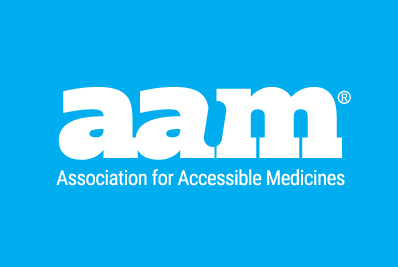Beginning in 2026, the Inflation Reduction Act (IRA) will usher in a new era of federal price setting on select high-cost prescription drugs. The program will begin with 10 drugs and expand annually. While the intent is to lower Medicare spending on high-cost, single-source drugs, a new report from Matrix Global Advisors (MGA) warns that the policy may unintentionally suppress competition, leading to higher long-term costs and reduced access to affordable generic and biosimilar medicines.
According to the report, the government’s new role as a price setter will crowd out existing and effective market-based methods of price competition – like generic and biosimilar entry – that have long driven down drug prices. For decades, small-molecule generic drugs have offered prices up to 97 percent lower than their brand counterparts. Biosimilars, newer to the U.S. market, push prices down by 24-76 percent, depending on the therapeutic area. Now, as generic and biosimilar manufacturers make decisions about which drug development areas to pursue, the chance that the drugs they may select will become subject to price negotiation will influence their decision.
Why? Generics and biosimilars are expensive and risky to develop. The uncertainty of government price negotiation before a competitor reaches the market reduces potential return on investment – making market entry less attractive. Generic developers often pursue costly and risky patent challenges, motivated by a 180-day exclusivity period. The drug price negotiation program shrinks the incentive to compete, as generic manufacturers already operate on thin margins. The same chilling effect applies to biosimilars, which are even more complex, time-consuming, and expensive to develop. The result is a growing gap in biosimilar development, driven by developers’ concerns that, in an uncertain market, they will not be able to recoup the cost of their investment. Already, of the 118 biologic patent expiries occurring over the next decade, only 10% have biosimilars in development. The drug price negotiation program will likely contribute to an even lower development rate.
To quantify the unintended consequences of this policy, MGA details an analytical framework that looks at the lost savings associated with a hypothetical single generic and biosimilar. In the generic drug market, the analysis considers two categories of drug sales – brand drugs with less than $1 billion in annual sales (e.g., a brand drug with $780 million in annual sales), and those with $1 billion or more in annual sales (e.g., a brand drug with $3.4 billion in annual sales). Using these hypothetical figures, Matrix Global Advisors estimates lost generic competition would result in unrealized annual savings of $630 million for the lower-sales drug and $3 billion for the higher-sales drug (see Table 1).
Table 1. Lost Generic Savings Per Drug
Drugs with <$1B in Annual Sale | |
Hypothetical annual brand sales | $780M |
Generic price discount | 90.1% |
Generic market share | 90% |
Annual lost savings | $650M |
Four-year lost savings | $2.5B |
Lost savings as % of sales | 81% |
Drugs with $1B+ in Annual Sales | |
Hypothetical annual brand sales | $3.4B |
Generic price discount | 97.3% |
Generic market share | 90% |
Annual lost savings | $3.0B |
Four-year lost savings | $12B |
Lost savings as % of sales | 88% |
To illustrate the impact of price negotiations in the biosimilar market, MGA estimates the lost savings associated with a delay in biosimilar entry for a reference biologic with $3.5 billion in annual sales. The analysis finds that the threat of price negotiations would result in unrealized savings of $1.9 billion annually (see Table 2).
Table 2. Lost Biosimilar Savings Per Drug
Average annual brand sales | $3.5B |
Biosimilar price discount | 65% |
Biosimilar market share | 65% |
Brand price discount | 33% |
Annual lost savings | $1.9B |
Lost savings as % of sales | 54% |
If one were to extrapolate these figures across the entire generic and biosimilars market, it’s easy to imagine how many billions of dollars of savings would be lost annually. While some policymakers argue that price negotiations and competition can coexist, the data tells a different story. Ironically, the drug price negotiation program may lead to reduced generic and biosimilar competition and slower market entry, which leads to higher average drug prices – not lower.
As Congress considers the future of drug pricing reform, it must not undermine the forces that have driven affordability for decades. Market-based competition, through generics and biosimilars, remains one of our most powerful tools to sustainably lower drug costs for patients. While drug pricing reform is necessary, the government’s efforts should shift to a focus on reducing the cost of brand drugs by curbing anticompetitive practices employed by brand drug manufacturers and removing barriers to biosimilar uptake – approaches that enable competition rather than supplant it.

